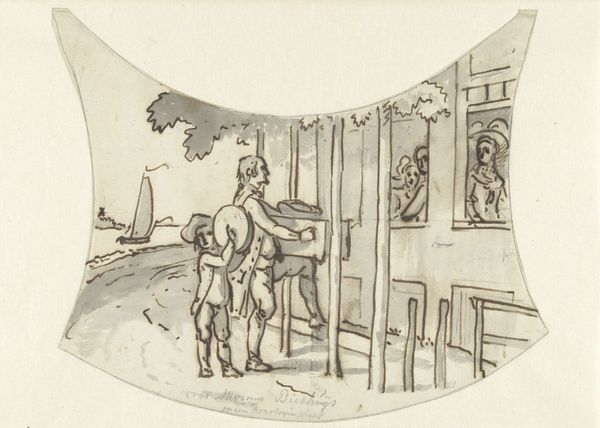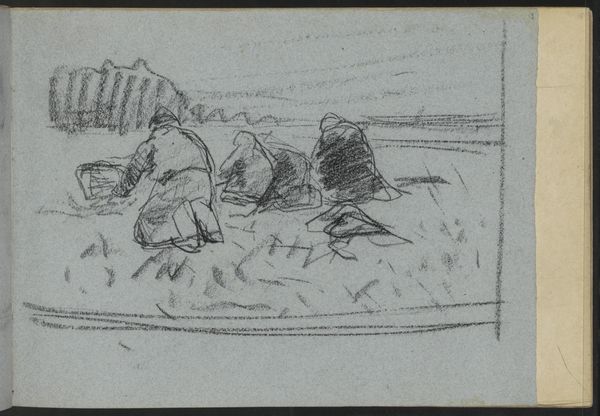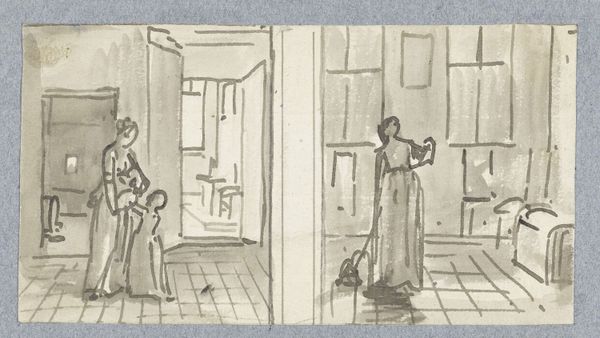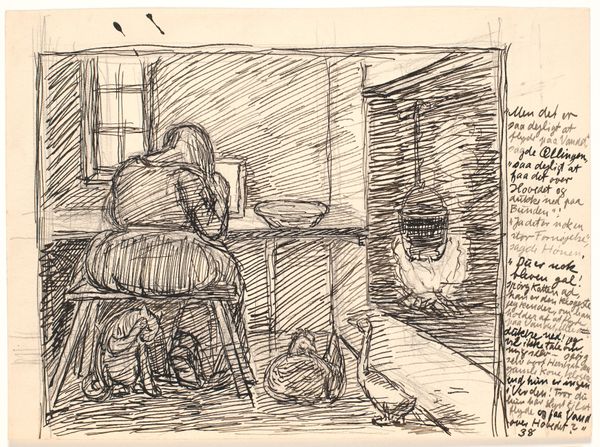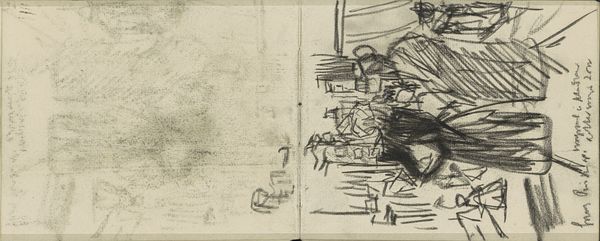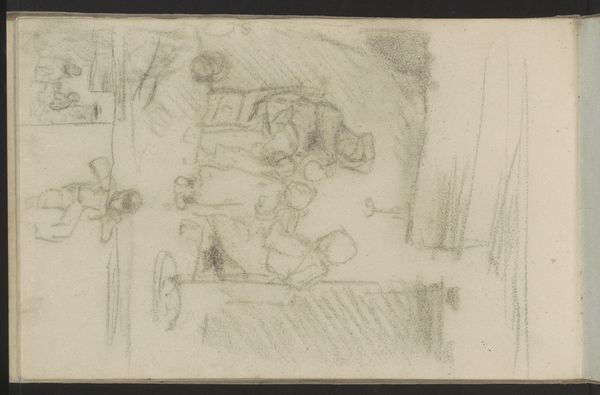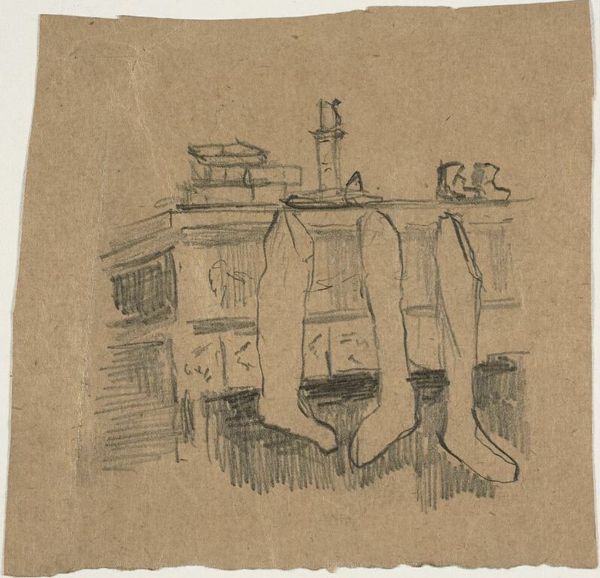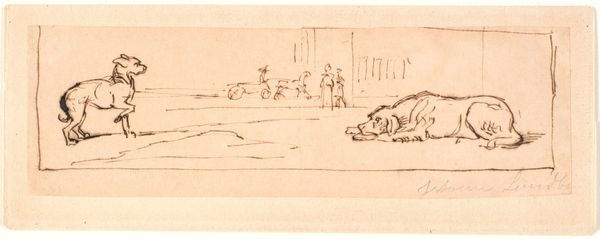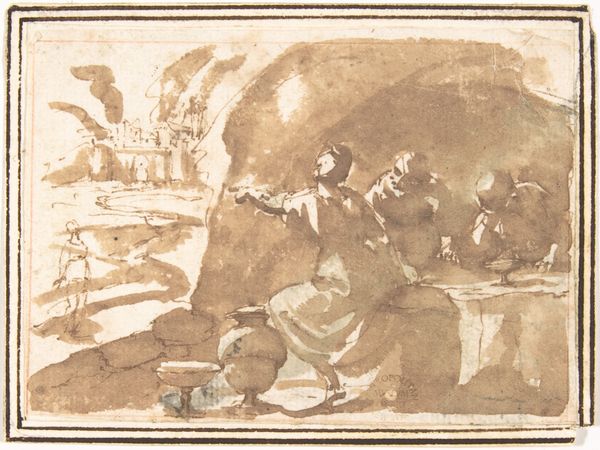
drawing, paper, ink
#
drawing
#
paper
#
ink
#
romanticism
#
genre-painting
Dimensions: 51 mm (height) x 60 mm (width) (bladmaal)
Editor: This ink drawing on paper, “Regnvejr. En dame stiger til vogns,” or "Rainy Weather. A Lady Enters a Carriage," created sometime between 1810 and 1873 by Wilhelm Marstrand, depicts a chaotic scene. I’m immediately struck by the sketchiness of it, like a fleeting moment captured. What stands out to you, given the historical context? Curator: This drawing offers a fascinating glimpse into 19th-century Danish society. The very act of depicting a woman entering a carriage elevates a mundane, everyday moment. It invites the viewer to consider the rituals and performances of social class at the time. We must remember that Romanticism, to which this piece has been assigned, took as one of its focuses daily life. Where do you think this drawing places its social priorities? Editor: Well, it seems to highlight the privilege of carriage travel, showcasing a divide between those who could afford such transportation and those who likely could not. It feels less like a celebration and more like documentation of that social reality. Curator: Precisely. Marstrand isn't just showing us a lady in a carriage, he’s implicitly commenting on a social hierarchy. The genre scene was undergoing huge shifts towards democratic and urban realities. Do you think the "Romantic" description of the piece holds fast given our conversation so far? Editor: That's an interesting point. I initially saw it as Romantic because of the focus on emotion and the individual within the elements, but considering the social commentary aspect, I see your point. It pushes the boundaries of that label, complicating how we understand it. It challenges the idea that Romanticism was purely about idealized visions. Curator: Absolutely. And understanding this allows us to appreciate how artists engaged with, and sometimes subverted, the prevailing artistic movements of their time to say more than they would initially be "allowed." Editor: I hadn't considered the socio-political elements so directly linked with the drawing before, very interesting. Curator: It is through historical perspective we see how even the simplest snapshot holds cultural relevance.
Comments
No comments
Be the first to comment and join the conversation on the ultimate creative platform.

